Article begins
I have become the guy who takes photos of tacos. I never expected to be this person, but writing my dissertation on success, adaptation, and identity for Oaxacan chefs in Columbus, Los Angeles, and Oaxaca City, I have become enmeshed in this culture of capturing my dish before digging in. This has allowed me to capture the food’s brilliant colors: the reddish-yellow of the birria consomé, the yellow of the piece of pineapple on top of the pastor pork, the verdant green of the artfully streaked salsa verde on top.
But this photography goes much deeper than capturing solely the image itself. It reveals the distinct methods and decisions of those cooking and serving the dishes, the participants I work with in my research. Are they able to serve the food they want to make, or are they sacrificing their recipes for popular visions of what a taco is, or indeed can be? Which eateries make their own tortillas? Which include radish or cucumber slices on the side? Lime slices? Are these chefs offering “Mexican” tacos (with cilantro and onion) and/or “American” tacos (with lettuce, tomato, cheese, and sour cream)?
These questions are at the center of my work. They explore how Oaxacan chefs succeed, adapt, and find their footing in new confines. Now, they also impact my thought process surrounding every taco I photograph (and eat).
An assortment of tacos placed on the sitting ledge in front of the truck’s window. The tacos contain meat, chopped red onion and cilantro and behind them are the four salsas in squeeze bottles provided by the truck.
Credit:
Andrew Mitchel
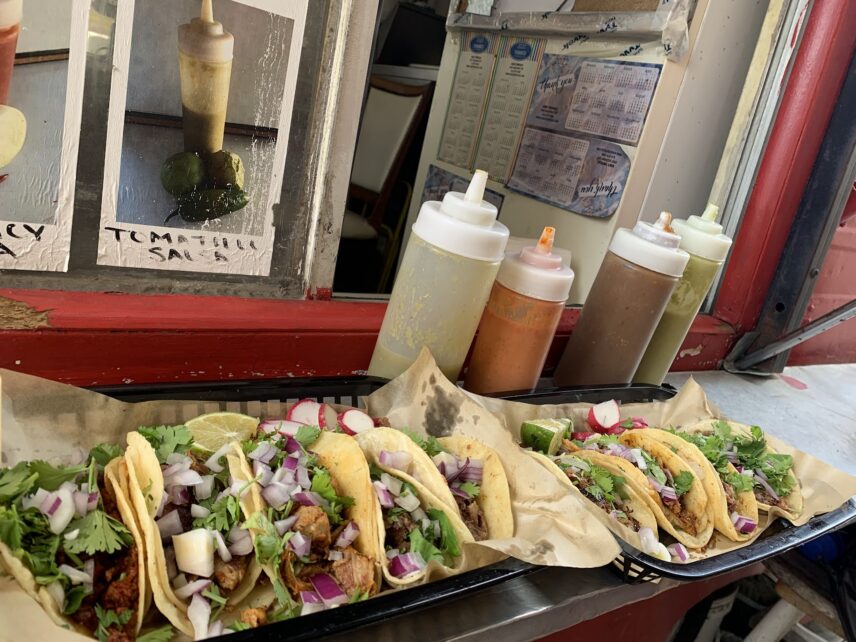
Tacos, artfully perched on the ledge of the taco truck
Four tacos on a plate on a wooden table with a lime wedge; two are al pastor pork with pineapple slices and a salsa verde, and two are slow-cooked chicken topped with purple cabbage and a serrano-cream sauce. Also on the table are golden-yellow corn tortilla chips and a pico de gallo of tomatoes, red onion, lime juice and jalapeños.
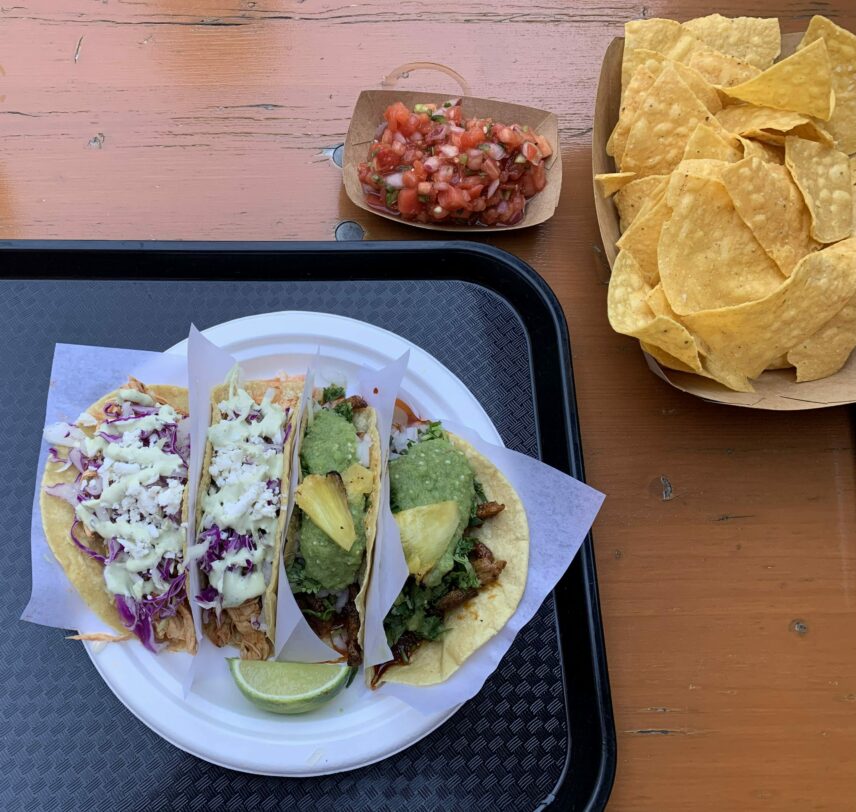
Tacos, chips and pico de gallo from the food hall: two al pastor, two slow-cooked chicken
This is a plate of golden corn tortilla chips topped by both a brown mole sauce, made primarily from chocolate, nuts and other assorted herbs and spices, and quesco fresco, or sprinkled hard cheese.
Credit:
Andrew Mit
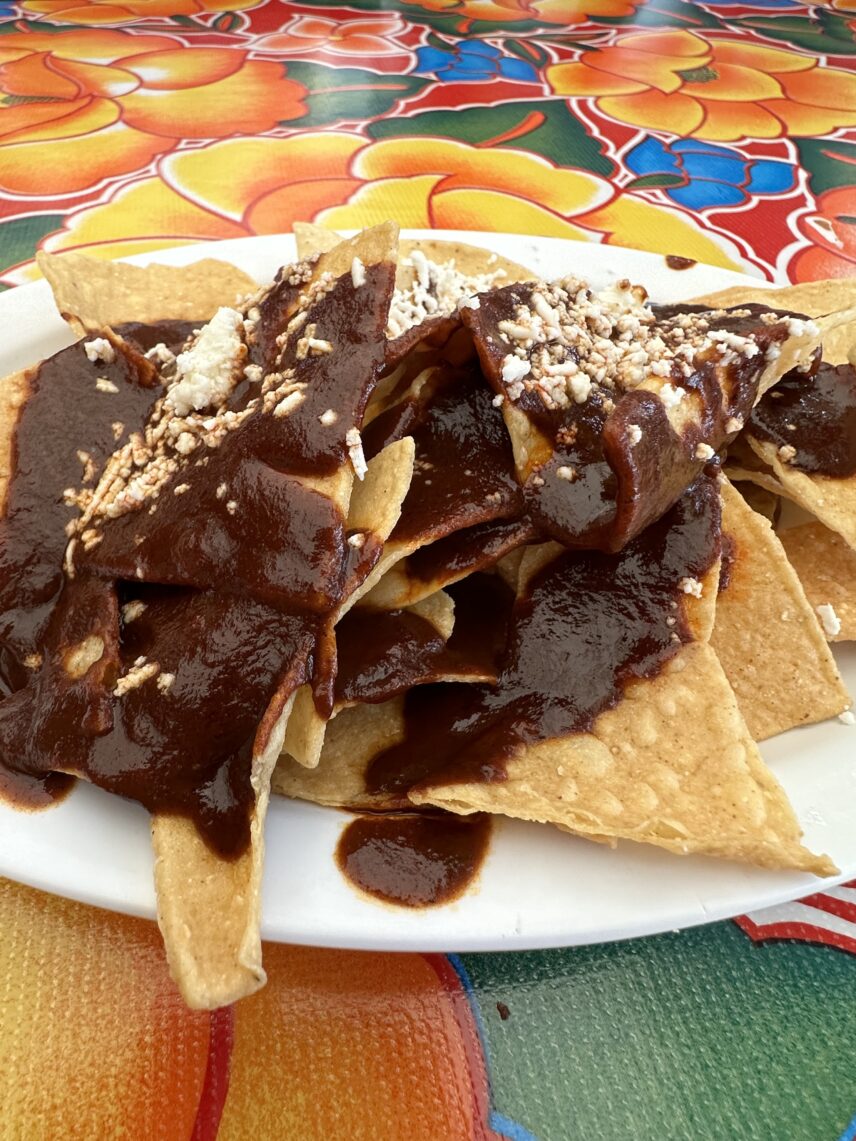
Mole chips: A Los Angeles Oaxacan take on chips for the table as an appetizer
A tlayuda served open-faced like a pizza, this one is topped with black beans, quesillo cheese, cabbage and Cecina, or Oaxacan-style thin sliced pork.
Credit:
Andrew Mit
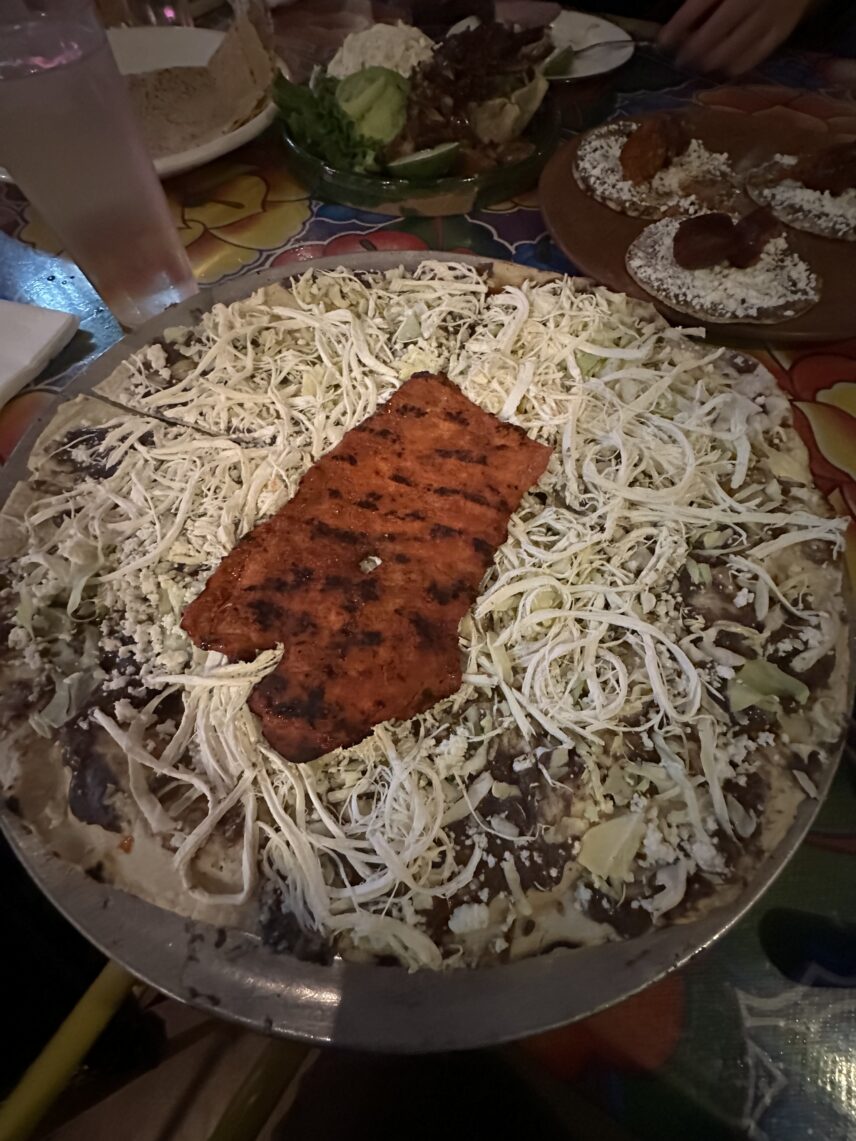
A Oaxacan tlayuda, served open-faced like a pizza.
Two closed quesadillas being readied by the attendant for cutting and serving. These were made on an outdoor griddle in Oaxacan City: one contained mole Amarillo (yellow mole sauce) and the other contained squash blossoms and cheese, or in Spanish, flor de calabaze y quesillo.
Credit:
Andrew Mitchel
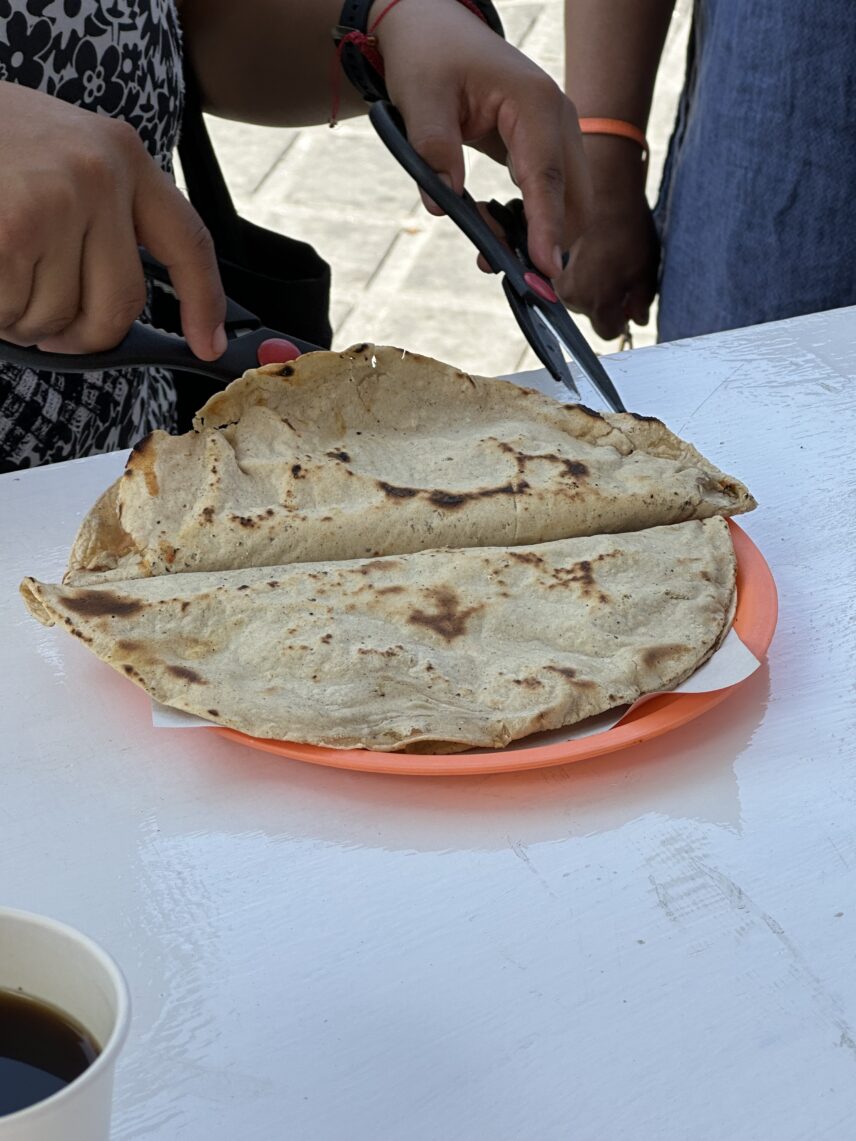
Quesadillas from the cart in Oaxaca City
This dish of tasajo, or Oaxacan-style beef, is a typical meat preparation from the region. This version, from an upscale restaurant in Oaxaca City’s center, came with two large pieces of this thinly sliced beef, a pico de gallo salsa with nopales (or cactus), a side of meatless mole enchiladas, a large serving of mashed black beans, and tortillas to make yourself small tacos on the side.
Credit:
Andrew Mit
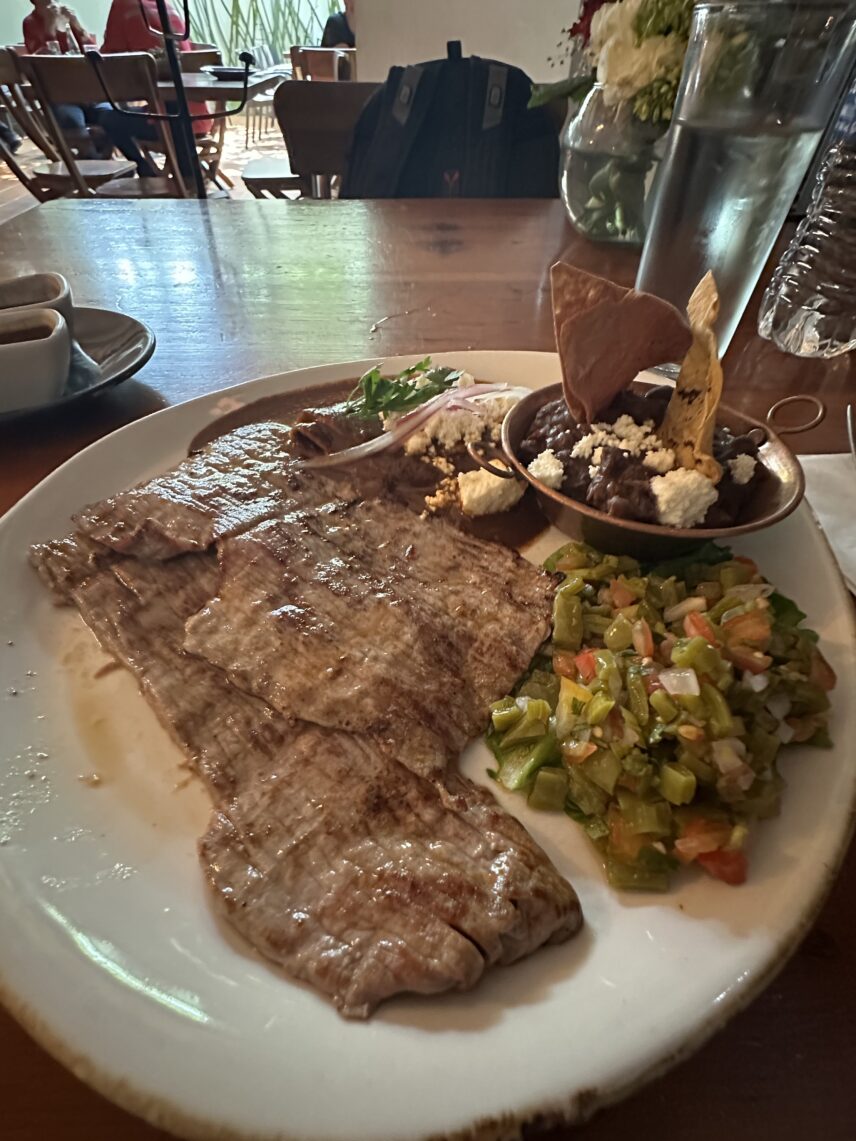
Tasajo, or Oaxacan-style beef, is a typical meat preparation from the region.







